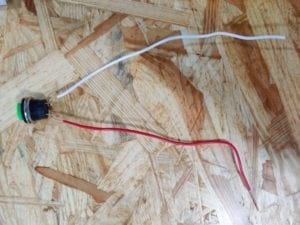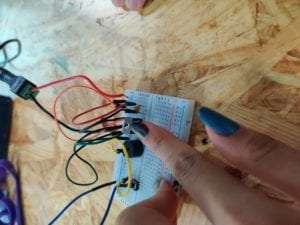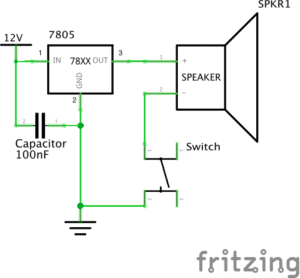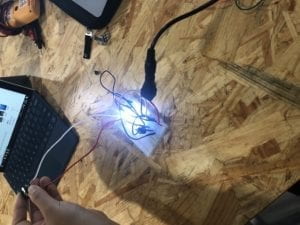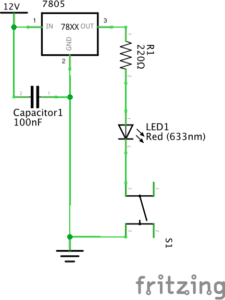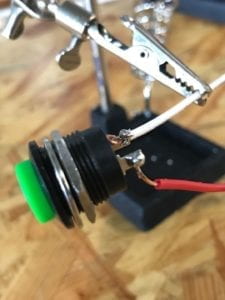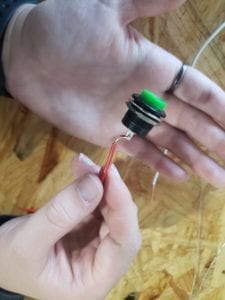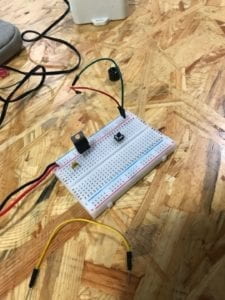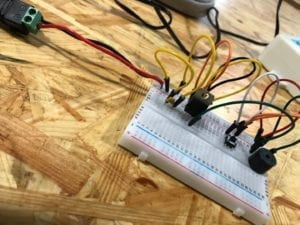First week recitation
In the first week recitation, I successfully built 3 circuits with my partners and also learn how to solder.Here are the details.
Materials
- 1 * Breadboard
- 1 * LM7805 Voltage Regulator
- 1 * Buzzer
- 1 * Push-Button Switch
- 1 * Arcade Button
- 1 * 220 ohm Resistor
- 1 * 10K ohm Resistor
- 1 * 10K ohm Variable Resistor (Potentiometer)
- 1 * LED
- 1 * 100 nF (0.1uF) Capacitor
- 1 * 12 volt power supply
- 1 * Barrel Jack
- 1 * Multimeter
- Several Jumper Cables (Hook-up Wires)
Diagam 1

This is the first circuit we built. Though it is a simple one and we easily understand the diagram as well as finding all components, we met difficulties due to the misunderstanding of the breadboard. Later with the help of the assistance we realized how the current flows in the board(actually crosswise)and how to use wires to connect each component together. After several times adjustments, the buzzer worked!
That was really a big motivation for us to continue the next two circuits.
Before that, we learn how to solder long wires to an arcade button. I found it interesting seeing the professor using holes on scissors to peel the rubber off the wire, observing the silver melt and solidified. We are a little bit nervous because we need discreetly moved the small device to avoid injures caused by the high temperature (700 degree centigrade).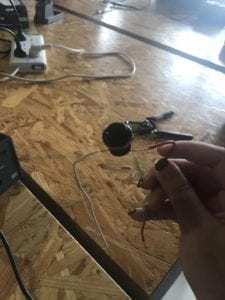
Diagram 2&3


The circuits 2&3 are lamp and dimmabe lamp. We first used the multimeter to figure out the resistance value of the two resistance then built the second circuit smoothly. But then I come across a problem with variable resistance for I didn’t know how it woks. Later in the class I asked the Professor and understood it was like the rotary button used to adjust volume.
This is the first time I built real circuits instead of just drawing diagrams on paper(which we always did in high school Physics class)so I was excited and inspired and more willing to create my own work.
Answers to Questions
Q1: I think during the process of making the circuit the interaction exists when we connect each components together according to the diagram. We have expectations for the buzzer rings, the LED goes lighter and dimmer and all we do is to meet the goals. We connect wires in certain order and it gives us the feedbacks.
Q2: The “EyeWriter” created by Zach Lieberman inspires me that there must be a creative way to link physical movements to technology. The paralyzed painter is able to express himself using his eyes is an example. Interactive art can fully use the potential the design can reach and involve physical computing to build connections between single person and the rest of the world.
